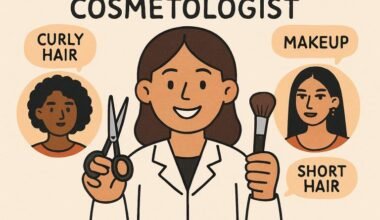In the past, wellness was narrowly defined by fitness routines or diet fads. Today, it’s a broad, evolving concept that touches mental health, sustainability, digital innovation, and community. As people prioritize holistic living, they are turning to brands and practices that align with deeper values and long-term health.
What’s behind this shift? Partly, it’s the aftermath of a global health crisis that made people rethink their lifestyles. But it’s also about access—more information, more choices, and more awareness. Consumers want products that are not just effective but also meaningful. This wellness revolution is driven by trends that go beyond the surface.
Here are the eight most powerful ones shaping the future of the industry.
1. Personalized Wellness Is Now the Standard
People no longer settle for generic health advice. Personalized wellness has become the norm, driven by advancements in data and technology. Individuals now use apps that tailor fitness plans to their routines, DNA tests that provide insight into their nutrition needs, and trackers that measure everything from stress levels to hydration. This shift is about more than convenience—it’s about control. People want to understand what works best for their bodies.
2. Wellness with a Greater Purpose
Consumers today are looking beyond product labels. They want to know what a brand stands for. There’s a growing demand for wellness companies to be ethical, eco-conscious, and socially responsible. People care about where ingredients come from, how they’re sourced, and what impact they have on the planet.
This shift is being driven by growing awareness around sustainability and health safety. Many are avoiding harsh chemicals and synthetic materials, opting instead for plant-based, cruelty-free, and biodegradable alternatives. They’re also drawn to companies that support social causes, provide fair labor conditions, and contribute to community well-being.
Melaleuca Inc. is a great example of this trend in action. Owing to the efforts of Frank VanderSloot, founder of Melaleuca, the company has flourished from a small startup into a well-reputed consumer goods business known for offering wellness products that are safe, effective, and environmentally responsible. Their cleaning and personal care products are made without toxic chemicals, and their business model promotes both individual empowerment and long-term well-being. Melaleuca’s approach to sustainability and purpose-driven growth is helping set a new standard in the industry.
3. Mental Fitness Is Just as Important as Physical Health
Mental health is no longer a background issue in wellness—it’s front and center. People now recognize that emotional balance, mental clarity, and stress management are just as important as staying physically fit. This has led to a surge in mindfulness practices, therapy platforms, and mental fitness tools.
Apps that guide meditation, breathing exercises, and even gratitude journaling are seeing massive growth. More people are talking openly about burnout, anxiety, and emotional fatigue. Employers are also taking mental health seriously, offering resources that support well-being both inside and outside the workplace. This growing focus reflects a wider cultural shift toward treating the mind with the same care as the body.
4. Clean Eating Goes Mainstream
Nutrition has always been a core part of wellness, but the approach is changing. People are moving away from fad diets and toward clean, balanced eating. They’re choosing whole, unprocessed foods and cutting back on added sugars and artificial ingredients. Plant-based diets are gaining traction—not just among vegans but with anyone seeking a healthier, more sustainable way to eat.
Functional foods that support gut health, immunity, and energy are also rising in popularity. It’s no longer just about calorie counts or cutting carbs—it’s about using food to support overall well-being. As access to quality food options grows, clean eating is becoming a lifestyle that people can stick with long-term.
5. Tech-Enabled Wellness Tools Are Everywhere
Technology is reshaping how people engage with their health. Wearable devices can track sleep, heart rate, movement, and more. Smartwatches and health apps give users real-time feedback, helping them stay on top of their goals. From AI fitness coaches to customized workout platforms, digital tools are turning wellness into a more interactive experience. Accessories like Apple Watch bands add both functionality and personalization to these devices, enhancing comfort and style for everyday use.
These innovations don’t just make health easier to manage—they also help people stay accountable. Whether it’s receiving a hydration reminder or seeing a weekly progress chart, small prompts go a long way in keeping motivation high. As tech continues to improve, wellness tools are becoming more affordable and accessible, putting better health within reach for more people.
6. Preventive Health Takes the Lead
Gone are the days when people only thought about health after a diagnosis. Preventive care is now at the heart of modern wellness. Instead of waiting to get sick, individuals invest in daily habits and products that help them stay healthy in the long term. This includes everything from regular health screenings to using supplements and natural remedies that support immunity, digestion, and energy. With the rising demand for high-quality nutraceuticals, many brands now depend on specialized capsule supplement manufacturing partners to ensure consistent quality, efficacy, and safety in their formulations.
People are also looking to integrative health professionals for guidance—experts who blend conventional medicine with holistic practices. Whether it’s acupuncture, functional nutrition, or stress-reduction techniques, the goal is to maintain balance before problems arise. This trend shows a clear desire for proactive living where wellness becomes a protective strategy, not just a reactive one.
7. Sleep Is Finally Getting the Attention It Deserves
Sleep is now widely recognized as a pillar of health. People are learning that without quality rest, it’s difficult to function mentally, physically, or emotionally. As a result, there’s a growing interest in tools and routines that promote better sleep—everything from white noise machines and blackout curtains to sleep-tracking apps and natural sleep aids.
Scientific research has helped drive this awareness, highlighting the link between sleep and everything from heart health to mental clarity. The message is simple but powerful: better sleep equals better living.
8. Transparency and Education Drive Consumer Choices
Today’s consumers are curious, informed, and selective. They don’t just accept marketing claims—they research ingredients, read reviews, and check certifications. As a result, brands that are transparent about their sourcing, manufacturing, and impact are gaining more trust.
Education is a major part of this shift. People want to understand why something works and how it fits into their wellness routine. Brands that offer accessible, science-backed information can build lasting relationships with their customers. So, the goal isn’t just to sell a product anymore—it’s to empower people to make choices that work for their health and values.
Working Together Towards a Healthier Future!
The wellness industry is undergoing a deep transformation. It’s moving away from quick fixes and toward intentional, informed living. What we’re witnessing is a redefinition of how people view health, purpose, and quality of life.
It is safe to say that the future of wellness belongs to those who understand that health is personal, connected, and purposeful. And in that future, both consumers and companies have a powerful role to play.



